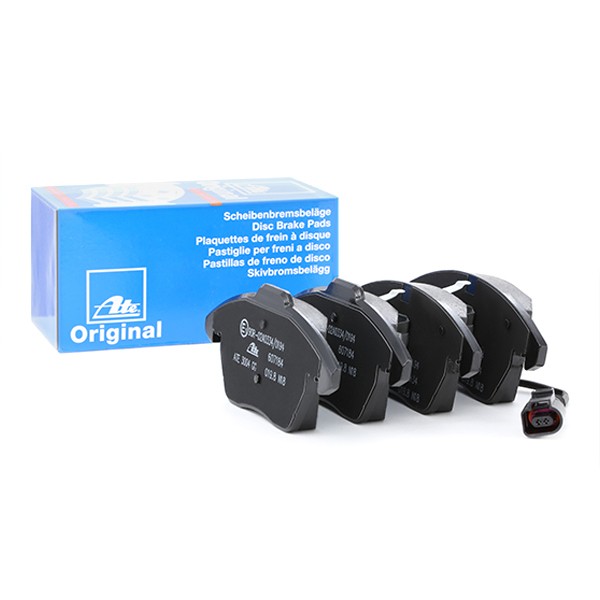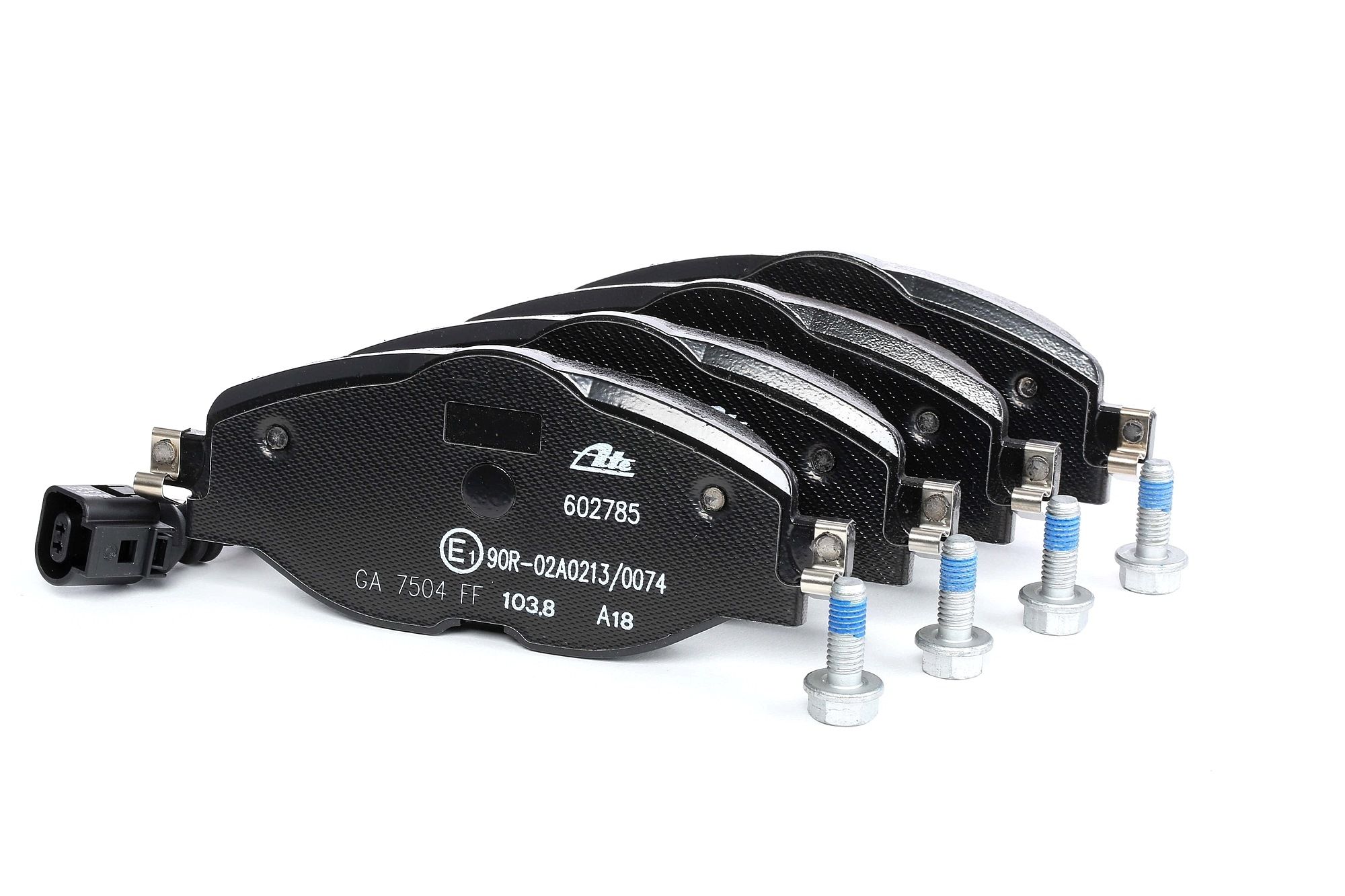Brake pads rear and front for car
Order cheap Brake pad set rear and front

Disc pads: top brands
Brake pad set for leading car makes
Brake pad set for top car models
AUTODOC Bestsellers: Disc pads at a good price
The top-selling spare parts in the Brake pads category. Browse our huge wide range of high-quality car parts from top brands in the category Brake pads and others.
 ATE 607184 Brake pad set
ATE 607184 Brake pad set
 ATE 602785 Brake pad set
ATE 602785 Brake pad set
 ATE LD7184 Brake pad set
ATE LD7184 Brake pad set
 ATE 602894 Brake pad set
ATE 602894 Brake pad set
 ATE 607217 Brake pad set
ATE 607217 Brake pad set
 ATE 607193 Brake pad set
ATE 607193 Brake pad set
 ATE 602868 Brake pad set
ATE 602868 Brake pad set
 ATE 607179 Brake pad set
ATE 607179 Brake pad set
 ATE 604879 Brake pad set
ATE 604879 Brake pad set
 ATE 603839 Brake pad set
ATE 603839 Brake pad set
 TEXTAR 23587 Brake pad set
TEXTAR 23587 Brake pad set
 ATE LD2765 Brake pad set
ATE LD2765 Brake pad set
 ATE 605780 Brake pad set
ATE 605780 Brake pad set
 ATE LD3857 Brake pad set
ATE LD3857 Brake pad set
Replacement of Brake pads: Video repair guide
How to change Front brake discs / Front brake rotors / Front Disc Brakes / Front brake pads on VOLKSWAGEN PASSAT CC 1 TUTORIAL | AUTODOC Top brands t...
Step by Step Video Tutorial for Do-it-yourself Auto Repair. Become an amateur mechanic with Autodoc.
| The bestselling products: | |||||
|---|---|---|---|---|---|
| P 85 020 | GDB1330 | 2355402 | 13.0460-2820.2 | 13.0460-2894.2 | 2313101 |
| From popular manufacturers: | |||||
| RIDEX | ATE | BREMBO | BOSCH | TRW | STARK |
| For popular car brands: | |||||
| VW | MERCEDES-BENZ | BMW | AUDI | OPEL | FORD |
| Brake pads – technical details | |||||
| Width [mm] | Height [mm] | Thickness [mm] | |||
| 87 | 58,5 | 53 | 52,9 | 17 | 17,2 |
| 87,6 | 146 | 54,7 | 52 | 16 | 19,7 |
| 87,5 | 136,8 | 57,3 | 72,8 | 17,3 | 19 |
FAQ
On the average, the parts last for 30,000–50,000 kilometres on cars equipped with a manual transmission and 25,000–30,000 kilometres on those with an automatic transmission. The working lifespan depends on a few factors:
- Individual driving style. If you often use brakes at high speeds, the parts can wear out as early as after 5,000 kilometres of use.
- Vehicle type. Heavy cars require more frequent replacement of the components.
- Degree of brake disc wear. Uneven surface of a damaged part has a negative effect on the pads.
- Jamming of the brake caliper pistons, which leads to uneven wear of the parts.
- Composition of the friction material. Working lifespan of ceramic parts is longer than that of organic ones.
Typically, a kit contains 4 parts – 2 for each wheel on an axle. Some kits contain 8 parts for one axle. This depends on the car design.
Modern parts are equipped with electronic or mechanical wear sensors. They indicate the necessity to replace the parts by the instrument panel warning light, which goes on, or by a squealing noise during braking. Also you can measure the friction lining thickness with a caliper gauge and compare it with the value specified by the car manufacturer as the minimum allowable. In addition, you can detect wear by the following signs:
- increased braking path;
- lowering of the working fluid level;
- metal dust on the wheel rim;
- unusual sounds and knocking when you stop the car abruptly.
For this job you will need:
- a flat screwdriver;
- a set of open and ring spanners;
- a lifting jack.
See your vehicle’s repair guide for a detailed instruction. Generally, this procedure involves the following steps:
- Make sure that the mechanisms cooled down.
- Open the bonnet and remove the brake fluid tank cap.
- Block the wheels with chocks.
- Loosen the wheel bolts.
- Raise the car.
- Remove the wheel bolts and the wheel itself.
- Remove the brake caliper fasteners.
- Remove the retaining clips and disconnect the wear indicator (if installed).
- Press in the brake caliper pistons.
- Remove the worn parts.
Remember that after finishing the work you may need to top up brake fluid and bleed the system. Press the brake pedal for a few times before starting to use the car.
Foreign sounds when braking can be caused by the following reasons:
- Poor quality of the pads.
- The parts are bedding in, and their factory coating hasn’t yet been rubbed off.
- Incorrect installation of the parts.
- Incompatibility of components of the assembly.
- Overheating of the system or driving in the rain.
- Foreign particles getting in the mechanism.
- The brake caliper piston gets stuck.
-
Safe Order 200 days
-
Free Shipping
-
А convenient app for buying car parts
-
Car repair videos

